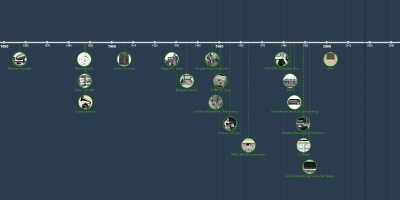jul 18, 1887 - Wax Cylinder
Description:
Charles Sumner Tainter of the Alexander Graham Bell Company took the idea of the tin cylinder and changed it into wax and used a less rigid stylus, the result was an improved phonograph with better quality of playback. They called it the graphophone. In 1887, their Graphophone system which recorded dictation on disposable cardboard tubes with a thin wax coating was being put the test of practical use by official reporters of the US Congress. After this system was demonstrated to Edison’s representatives, Edison quickly resumed work on the phonograph. He settled on a thicker all-wax cylinder, the surface of which could be shaved down for reuse. The graphophone and Edison’s ‘perfect phonograph’ were commercialized in 1888. A patent sharing agreement was eventually signed and wax-coated cardboard tubes were abandoned in favor of Edison’s all-wax-cylinders as an interchangeable standard format. In 1889, prerecorded wax cylinders were marketed. These have professionally made recordings of songs, instrumental music or comedy in their groves. The customers for the being proprietors of the nickel-in-the-slot machines- the first juke boxes.Added to timeline:
Date:
jul 18, 1887
Now
~ 138 years ago
